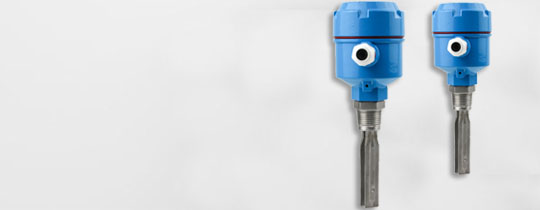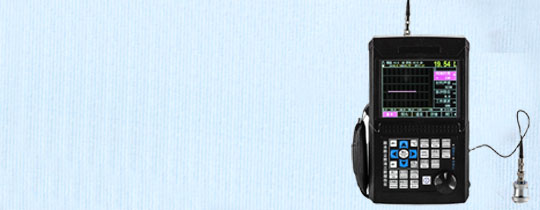
Waterproof and temperature resistant proximity switch FXG-8040K for steel mills
There are many types of waterproof and temperature resistant proximity switches FXG-8040K used in steel mills, divided into AC and DC types according to different types; There are normally open and normally closed types; There are capacitive, inductive, Hall type, and reed type; There are second and third line, as well as fourth and fifth line; For DC three wire and four wire proximity switches, there are PNP and NPN types.
- FXG-8040K
- ZHUOXIN
- 24v-110v-220v-380v
- IP65
- TT, Paypal, Credit card, Western union
- +86-15163766288
- There are many types of waterproof and temperature resistant proximity switches FXG-8040K used in steel mills, divided into AC and DC types according to different types; There are normally open and normally closed types; There are capacitive, inductive, Hall type, and reed type; There are second and third line, as well as fourth and fifth line; For DC three wire and four wire proximity switches, there are PNP and NPN types.
Description

Introduction to the waterproof and temperature resistant proximity switch FXG-8040K used in steel mills: The vibration coil behind the induction surface of the proximity switch generates an alternating electromagnetic field. Any conductive material entering this magnetic field will absorb the noise from the oscillation circuit and generate eddy currents. Then, the attenuation of the oscillator is converted into a switching signal in the output amplifier. Based on this functional principle, all metals can be detected, regardless of whether they are moving or not. The high-temperature induction switch is not affected by the operating environment of the sensor due to the high-frequency magnetic field being unaffected by temperature and the magnetic properties inside the detected object. Performance characteristics: 1. To avoid damaging the proximity switch during installation, the torque range should not exceed the given tightening torque. Stainless steel thread m5=2nm m8=10nm m12=20nm m18=55nm m30=200nm
2. Induction zone/induction surface. The induction zone is located in the front of the induction surface. In the induction zone, the proximity switch reacts to the nearby metal components, changing the output state.
3. Rated sensing range (sn): The distance at which the switch output state changes when the metal component approaches the sensing surface of the switch is the rated sensing range. 4. Repeatability: The repeatability accuracy of two measurements under standard conditions. The difference in the measured values should be less than 10].
5. Output function: Closed contact (no): Object in sensing area - Switch output open contact (nc): Object in sensing area - Switch suppression
6. LED display equipment's ambient temperature can reach up to+130° When c, there will be an LED status When the LED light is no longer on, it indicates that the temperature has reached * high. Through this process, the equipment can be protected from damage. 7. Start delay time: The time interval between the moment when the switch is turned on and when it is ready to output a normal signal (within ms milliseconds).
8. Correction factor: If a material different from steel (1.0037) is used, the correction factor specifies the change in detection distance. The correction factor depends on the type, characteristics (internal structure), size, and geometric shape of the material being detected. 9. Typical correction factor: st: 1 v2a: approximately 0.6 ms: approximately 0.3 ms: approximately 0.2 copper: approximately 0.15 correction factor for all steel sensors: v2a: 0.5 ms: approximately 0.1 aluminum, in order to establish an approximate induction range different from the ST37 material, bixu multiplies the induction range of ST37 by the corresponding correction factor. 10. Reverse polarity protection: If the connection terminals are reversed, a built-in protection can prevent damage to the proximity switch. 11. Short circuit protection: In case of current overload, there is a built-in protection to prevent damage to the proximity switch.
12. Switching point drift: Switching points change due to changes in the environment. The waterproof and temperature resistant proximity switch FXG-8040K inductive proximity switch used in steel mills can be divided into buried (buried) and non buried (non buried) types according to their installation methods. Buried type refers to the sensor head being flat, while non buried type refers to the sensor head having protrusions. The difference between embedded type is as follows: it can be embedded for installation, and the detection surface and surrounding metal can be flush without affecting the performance of the proximity switch; The detection distance is relatively short. Non embedded installation is not allowed, and the detection surface and surrounding metal cannot be flush. There must be a certain amount of space left, otherwise it will affect the performance of the proximity switch; The relative detection distance is relatively long. The periphery of the proximity switch generally has metal threads, and the embedded sensing head is fully enclosed in the metal threads; Non embedded means that the sensing head will expose the metal threads. Mainly to meet installation requirements. If the detected object is tightly attached to the surface, an embedded method can be used; If the object is not detected to be suspended, a non buried type can be used. Wiring: 1. Two wire system Two wire system wiring is particularly simple. Connect the proximity switch and load in series, then connect the power supply, and use the matching detection object material to approach the proximity switch, and the proximity switch will act. 2. The three wire lead has color markings for proximity switches. The three wire lead has color markings, including the color of the positive wire of the power supply (red or brown), the color of the 0V wire of the power supply (blue), and the color of the signal wire (yellow or black). The three-wire wiring of proximity switches is different because there are two types of three-wire wiring: PNP and NPN. If it is an NPN type proximity switch wiring, locate the proximity switch signal wire, connect the load, and then connect the load to the positive pole wire of the proximity switch power supply. If it is a PNP type proximity switch, also find the signal line of the proximity switch, connect the load, and then connect the load to the 0V line of the proximity switch power supply. Typical applications: 1. Cement: rotary kiln head/grate cooler working condition monitoring 2. Power plant: boiler and waste heat boiler combustion monitoring 3. Glass: glass melting furnace working condition monitoring 4. Metallurgy: blast furnace/heating furnace working condition monitoring 5. Petrochemical: various tubular heating furnace working condition monitoring 6. Garbage treatment: burner and incinerator working condition monitoring Some products of Zhuoxin Company: belt slip protection switch SR-HDJS-I LJ18A3-8-J-EDZSE3JK-TR12-D photoelectric switch& nbsp; Sound and light alarm; Model: GH-11F AC380VRLS-78SW3 speed detector for steel mills; Dual phase rope switch SYLHS-X-1-B380V; PT-SC2-220-R Audible and Visual Alarm for Industrial Use; S-F1 Industrial Alarm< Level switch RZ34-BB090PT-SC3 sound and light alarm& SLK-2 self-locking manual reset bidirectional rope switch & nbsp;
& nbsp;
2. Induction zone/induction surface. The induction zone is located in the front of the induction surface. In the induction zone, the proximity switch reacts to the nearby metal components, changing the output state.
3. Rated sensing range (sn): The distance at which the switch output state changes when the metal component approaches the sensing surface of the switch is the rated sensing range. 4. Repeatability: The repeatability accuracy of two measurements under standard conditions. The difference in the measured values should be less than 10].
5. Output function: Closed contact (no): Object in sensing area - Switch output open contact (nc): Object in sensing area - Switch suppression
6. LED display equipment's ambient temperature can reach up to+130° When c, there will be an LED status When the LED light is no longer on, it indicates that the temperature has reached * high. Through this process, the equipment can be protected from damage. 7. Start delay time: The time interval between the moment when the switch is turned on and when it is ready to output a normal signal (within ms milliseconds).
8. Correction factor: If a material different from steel (1.0037) is used, the correction factor specifies the change in detection distance. The correction factor depends on the type, characteristics (internal structure), size, and geometric shape of the material being detected. 9. Typical correction factor: st: 1 v2a: approximately 0.6 ms: approximately 0.3 ms: approximately 0.2 copper: approximately 0.15 correction factor for all steel sensors: v2a: 0.5 ms: approximately 0.1 aluminum, in order to establish an approximate induction range different from the ST37 material, bixu multiplies the induction range of ST37 by the corresponding correction factor. 10. Reverse polarity protection: If the connection terminals are reversed, a built-in protection can prevent damage to the proximity switch. 11. Short circuit protection: In case of current overload, there is a built-in protection to prevent damage to the proximity switch.
12. Switching point drift: Switching points change due to changes in the environment. The waterproof and temperature resistant proximity switch FXG-8040K inductive proximity switch used in steel mills can be divided into buried (buried) and non buried (non buried) types according to their installation methods. Buried type refers to the sensor head being flat, while non buried type refers to the sensor head having protrusions. The difference between embedded type is as follows: it can be embedded for installation, and the detection surface and surrounding metal can be flush without affecting the performance of the proximity switch; The detection distance is relatively short. Non embedded installation is not allowed, and the detection surface and surrounding metal cannot be flush. There must be a certain amount of space left, otherwise it will affect the performance of the proximity switch; The relative detection distance is relatively long. The periphery of the proximity switch generally has metal threads, and the embedded sensing head is fully enclosed in the metal threads; Non embedded means that the sensing head will expose the metal threads. Mainly to meet installation requirements. If the detected object is tightly attached to the surface, an embedded method can be used; If the object is not detected to be suspended, a non buried type can be used. Wiring: 1. Two wire system Two wire system wiring is particularly simple. Connect the proximity switch and load in series, then connect the power supply, and use the matching detection object material to approach the proximity switch, and the proximity switch will act. 2. The three wire lead has color markings for proximity switches. The three wire lead has color markings, including the color of the positive wire of the power supply (red or brown), the color of the 0V wire of the power supply (blue), and the color of the signal wire (yellow or black). The three-wire wiring of proximity switches is different because there are two types of three-wire wiring: PNP and NPN. If it is an NPN type proximity switch wiring, locate the proximity switch signal wire, connect the load, and then connect the load to the positive pole wire of the proximity switch power supply. If it is a PNP type proximity switch, also find the signal line of the proximity switch, connect the load, and then connect the load to the 0V line of the proximity switch power supply. Typical applications: 1. Cement: rotary kiln head/grate cooler working condition monitoring 2. Power plant: boiler and waste heat boiler combustion monitoring 3. Glass: glass melting furnace working condition monitoring 4. Metallurgy: blast furnace/heating furnace working condition monitoring 5. Petrochemical: various tubular heating furnace working condition monitoring 6. Garbage treatment: burner and incinerator working condition monitoring Some products of Zhuoxin Company: belt slip protection switch SR-HDJS-I LJ18A3-8-J-EDZSE3JK-TR12-D photoelectric switch& nbsp; Sound and light alarm; Model: GH-11F AC380VRLS-78SW3 speed detector for steel mills; Dual phase rope switch SYLHS-X-1-B380V; PT-SC2-220-R Audible and Visual Alarm for Industrial Use; S-F1 Industrial Alarm< Level switch RZ34-BB090PT-SC3 sound and light alarm& SLK-2 self-locking manual reset bidirectional rope switch
 & nbsp;
& nbsp;
Tags
Get the latest price? We'll respond as soon as possible(within 12 hours)

















